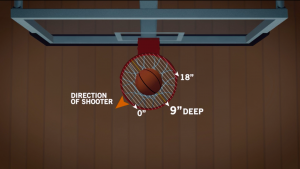2019 NBA Summer League, Part 2: Data-Tracking Reaches New Heights
‘Connected’ basketballs highlight the NBA’s pursuit of accurate information
Story Highlights
Throughout the history of professional basketball, three factors have been part of the formula: two teams, each clawing for a win, and the concept of time keeping the combatants in check. When the NBA introduced the 24-second shot clock during the 1954-55 season, time became a bigger factor. In a game where time is of the essence and the difference between winning and losing can come down to the millisecond, the league is continuing its efforts in data tracking to improve officiating.
“[Noah shot-analysis technology] has continued this year and is tracking every shot taken from every location [on the floor],” says Steve Hellmuth, EVP, media operations and technology, NBA Entertainment. “There’s also a couple of experiments that we’re running alongside basketball operations.”
MORE FROM NBA SUMMER LEAGUE
- The League Heads to the Next Technological Frontier
- NBA Produces World’s First 5G Smartphone Broadcast
- ESPN Puts Flurry of Tech to the Test
Getting the Call Correct With Automated Sensors
To address potential lapses in judgment, the NBA is leveraging a component of Noah technology to increase the accuracy and precision of timekeeping during crunch time.

The NBA can leverage these analytics to create new and engaging graphics of a player’s or team’s shot chart.
“If you’re a 24-second [shot-clock] operator and that ball touches the rim, you have to prepare yourself to reset to 24 seconds or 14 seconds based on who rebounds the ball,” Hellmuth says. “We’re using sensors [over the backboard] to inform the bench if the ball has touched the rim [or not]. We’re also looking to see if these same sensors can stop the [game] clock in the last minute of any quarter and the last two minutes of the fourth quarter or any overtime period.”
The All-Star Game is often a laboratory for innovations, and he’s already looking ahead to next year: “We’re going to have a lot of data coming out of the [2020] All-Star Game to look at [as well].”
In addition to Noah, the league is engineering “connected” basketballs to possibly improve the typical Spalding basketball used during the regular season and playoffs. During selected Summer League practices and games, these prototypes will have the look and feel of a game-ready basketball but will collect data regarding efficiency and performance. After completing this testing program, the league will have information to augment statistical recordkeeping, officiating, and other aspects of the game. Players will also provide feedback and critiques for future testing efforts.
A Reimagined Graphics Package
Along with necessary upgrades to officiating, data-tracking allows the team at the NBA to pursue other stylistic options for on-air telecasts. The most recent project is to develop a fresh new take at a timeless classic in the graphics department.
Aside from the broadcast, all 30 NBA teams can use Noah shot-tracking technology to correct shooting tendencies and increase efficiency.
“The NBA shot chart has stayed the same for years with the X’s and O’s,” Hellmuth explains. “I’ve challenged our graphics crew to take the data from Noah and create an animated shot chart with balls moving and going in or out of the basket. It gives you kind of a better visual [on] how that player performs in any quarter or any game.”
Although the league is working to enhance the support and creative flexibility of game-day staff, the Noah system will provide a much-needed safety net on any given night for both shot-clock operators and referees.
“This is all in the experimentation phase,” notes Hellmuth. “The human operators do the best job that they can, but a machine can do it better.”
